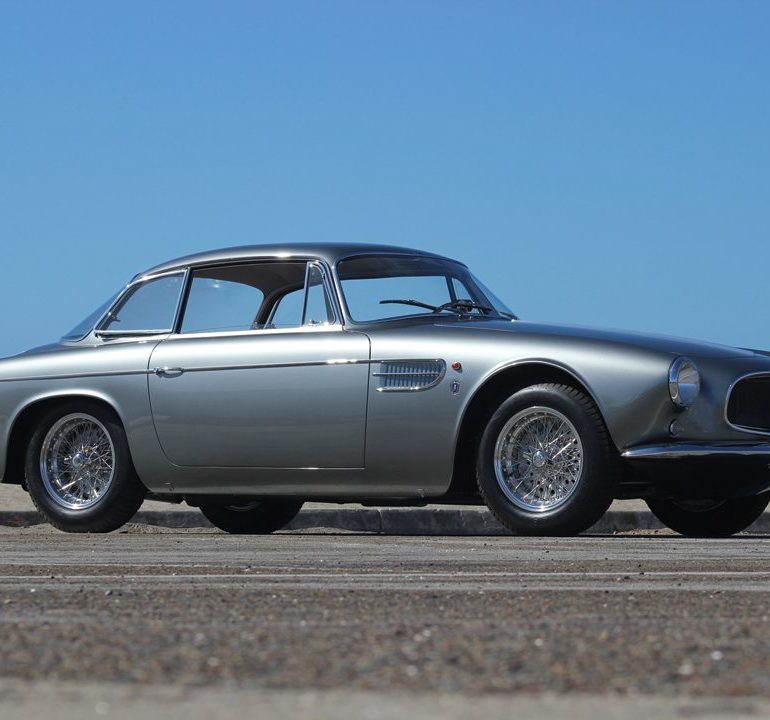It is interesting to note that the two most iconic constructors of Italian road-going sports cars—Ferrari and Maserati—only grudgingly began offering Grand Touring cars in the 1950s. For founders Enzo Ferrari and the Maserati brothers, racing was their focus and their passion. Yet, in a post-war world screaming for sports cars, both companies eventually had to embrace the reality that they needed to sell GT cars in order to have the money to develop exceptional racecars. For Ferrari, this transition came a little earlier. For Maserati, it wouldn’t be until 1954 that it would offer a true road-going GT.
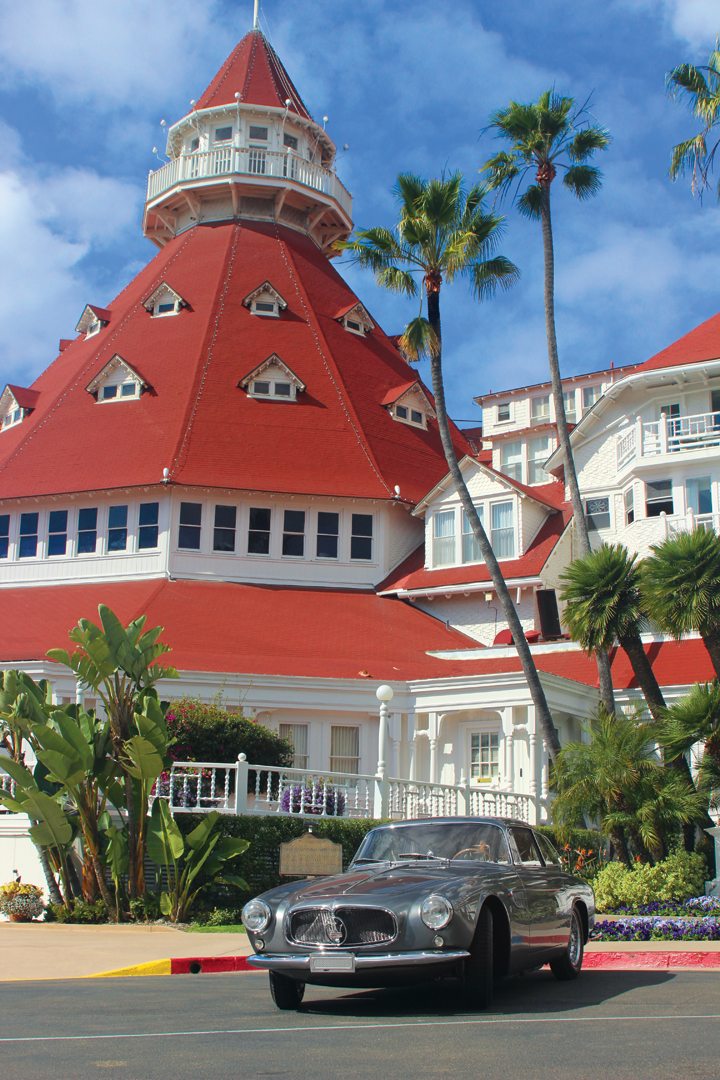
Brothers in Arms
Rodolfo Maserati was a locomotive engineer living south of Milan, in Piacenza, with his wife Carolina in the 1880s, when they began to have children. The Maseratis had seven sons, and with a father involved with trains on a daily basis, it is perhaps not surprising that nearly all of them would find themselves captivated by all things mechanical.
By the turn of the century, the oldest son, Carlo, began working at FIAT as a test driver, at the behest of Vincenzo Lancia, who had befriended the young man. After a brief stint with FIAT, Carlo moved to Isotta Fraschini, where he was able to bring his brothers Alfieri, Bindo and Ettore into the company. Though Isotta rode a brief crest of popularity at the turn of the century, by 1910 it had fallen on difficult times and subsequently had to lay off a substantial chunk of its workforce. That same year Carlo sadly passed away due to tuberculosis.
By December of 1914, Alfieri had struck out on his own, opening a garage in Bologna for the service and race preparation of Isotta Fraschinis. His new business was called Officina Alfieri Maserati. Just a few months later in July, however, Europe was thrust into World War and so Alfieri rejoined his brothers at Isotta to work on the development of aero engines, leaving his younger brother Ernesto to look after the service business.
After the war, Alfieri became a consulting engineer for Diatto, where he was given free rein to develop racing cars for a company that was better known for its railway cars. From 1921 to 1925, Alfieri built and raced a number of Diatto racecars, which demonstrated elegant engineering and great promise. However, by 1925, Diatto too was in serious financial difficulty and so a deal was arranged whereby Alfieri would go off on his own and take with him the 2-liter, inline 8-cylinder racer that he had been developing. For the 1926 racing season, Alfieri’s 2-liter racer was entered under the Officine Alfieri Maserati banner—with a Neptune’s Trident badge, designed by artist-brother Mario, on its nose—and with that the Maserati marque was born.
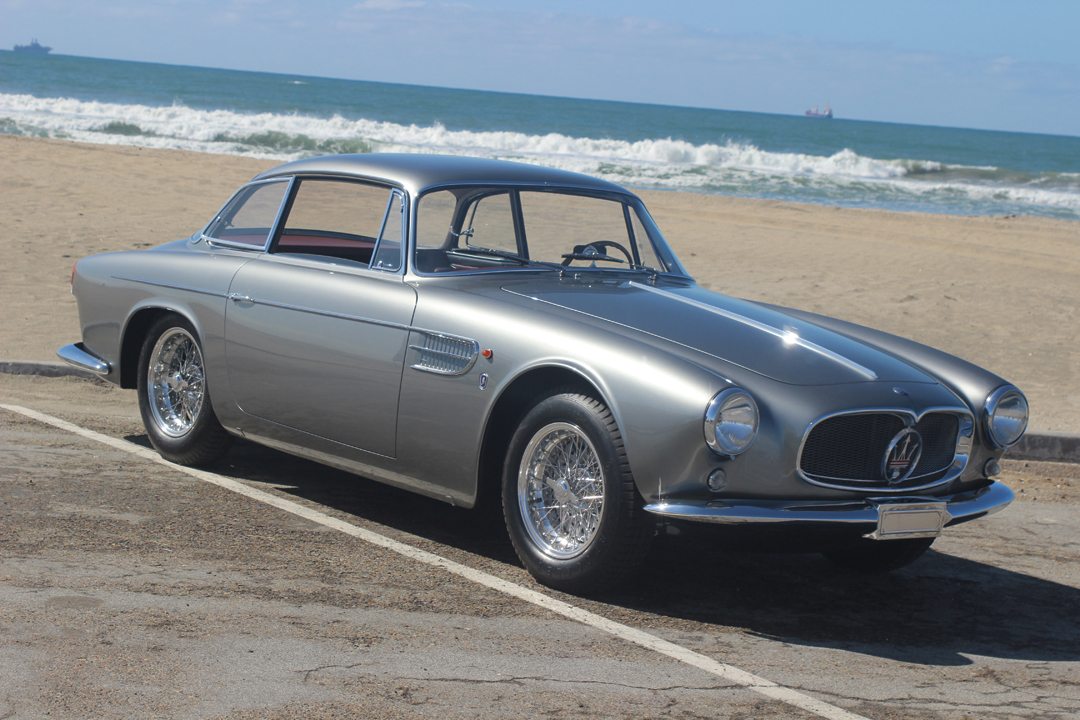
Triumph and Tragedy
Over the next several years, the Maserati brothers enjoyed tremendous success with their racecars winning on track, resulting in new orders, offers of investment capital and even support from Italy’s motorsport-crazy dictator, Benito Mussollini. In 1927, however, Alfieri suffered a bad crash in one of his racecars, resulting in him losing one of his kidneys. By 1931, his other remaining kidney began to fail and with the advent of dialysis long in the future, Alfieri passed away on March 3, 1937. Alfieri’s passing would result in surviving brothers Bindo, Ettore, Ernesto and Mario having to carry the torch for the family’s eponymous business.
Alfieri’s failing health, though, was not the only trouble facing the Maserati concern. Still devoted exclusively to the production of racing cars (and a line of spark plugs developed by Alfieri), by 1936 Maserati as a company was struggling. With the world creeping again toward war, financial times were difficult. Compounding the financial struggle was the struggle on track, where Maseratis were now having to compete against fabulously more competitive machines from Alfa Romeo, Mercedes-Benz and Auto Union—all funded by nationalistic governments that saw these companies’ racing programs as global PR machines.
With all these business pressures, just prior to Alfieri’s passing, the brothers began looking for outside investment to help keep them afloat. Fortunately, there was an unlikely angel in the wings.
Saved by Scrap
Adolfo Orsi began his working life at the turn of the century as a rag and bone collector in Modena, Italy. Orsi’s “recycling” business soon evolved to include the collection of scrap metal, which so blossomed that by 1922 he was able to open his own steel works in Modena. The steel works soon begat a foundry, a tramway and railway company, a Fiat dealership and even a manufacturing business for agricultural equipment. In the course of just 20 years, Orsi had gone from a 15-year-old kid picking up trash, to one of the most successful industrialists in all of Italy.
When Orsi was made aware that the Maserati brothers were in need of help, he saw a number of opportunities. Not only could he acquire a company with advanced engineering expertise, but it would also enable him to have an easily recognizable “halo” brand to consolidate all of his business holdings behind. The Maserati name had international prestige and that visibility could help all of his business holdings.
So, on January 1, 1937, documents were formalized that saw Orsi take over the Maserati concern (car and spark plug manufacture), with brothers Bindo, Ernesto and Ettore contracted to the company as consulting engineers for the next 10 years. The brothers could now focus on what they did best, design and build racecars, while Orsi could focus on what he did best, build successful companies.
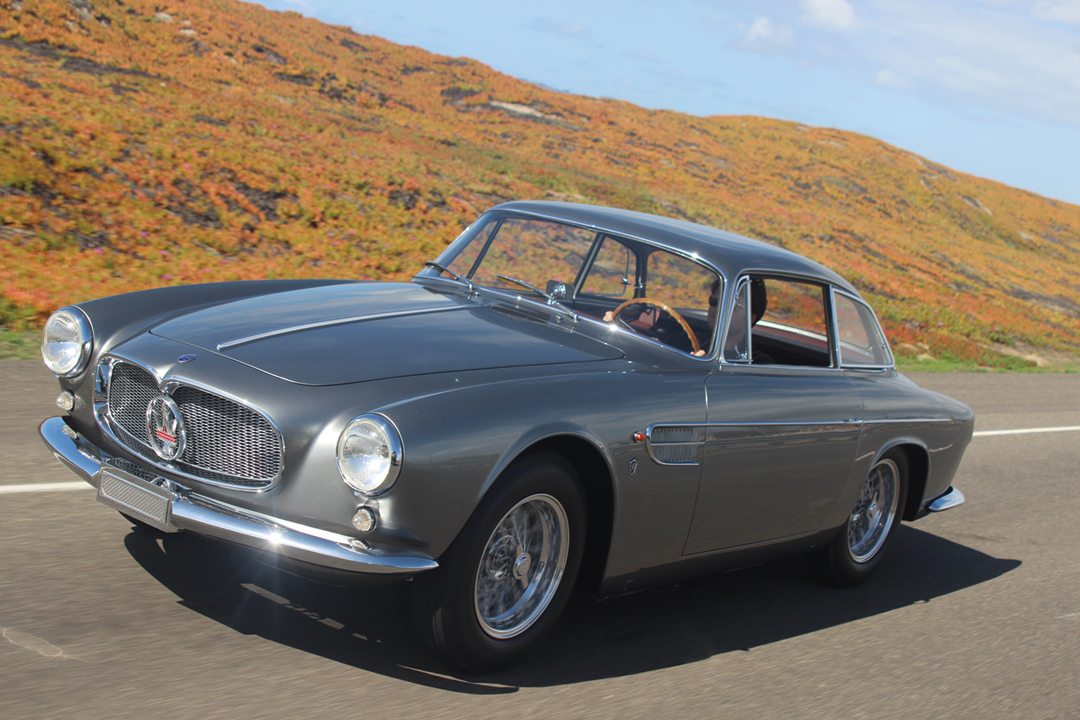
However, Orsi had no intention of merely underwriting the status quo. In 1939, he moved the works from Bologna to a new facility on Viale Ciro Menotti, in Modena—right across the street from Orsi’s steel works.
Additionally, he let the brothers know that in order for Maserati to continue successfully, it would need to diversify and begin to offer road-going sports cars to help with the bottom line.
Six for the Road
As early as 1941, the brothers began experimenting with a road-going prototype, based around a 1,500-cc, inline 6-cylinder engine. However, with the onset of World War II, all of Maserati’s resources were redirected to the production of machine tools and the servicing of military vehicles.
When the war ended, it took Maserati several years to return to automotive production. By the start of 1947, the brothers’ 10-year service contract had expired and they duly gave Orsi notice that they intended to forge out on their own, again to produce just racing cars, only now under the OSCA banner. Before the brothers departed, however, they did put the finishing touches on a new engine and sports car that would transition Maserati into the roadcar world.
Unveiled at the March 1947 Geneva Salon, this new sports car, known as the A6-1500, featured a 1,488-cc, SOHC, inline 6-cylinder engine, which was an evolution of the Tipo 6CM engine used so successfully in pre-war voiturette racing. This engine was mated to a simple ladder-type tubular frame, with independent front suspension and coupé body designed by Pinin Farina.
Over the ensuing years, variations of this same A6 sports car would compete in a variety of international sports car and F2 races. With a sometime bewildering host of designations, it may be helpful to recap briefly Maserati’s naming nomenclature during this time period. Depending on the source one refers to, the “A” either is a tribute to Alfieri Maserati, or the initial of the girlfriend of one of the designers! The “6” represents the 6-cylinder engine format, while the “G” stands for Ghisa which means “iron” in Italian and indicates a cast iron cylinder block (though confusingly, not in later years!). In the case of some racing models, additional letters would be added such as “CS” (Corsa Sport) or “M” (Monoposto). Thus an A6GCM, is a 6-cylinder, cast iron block, racing, single-seater.
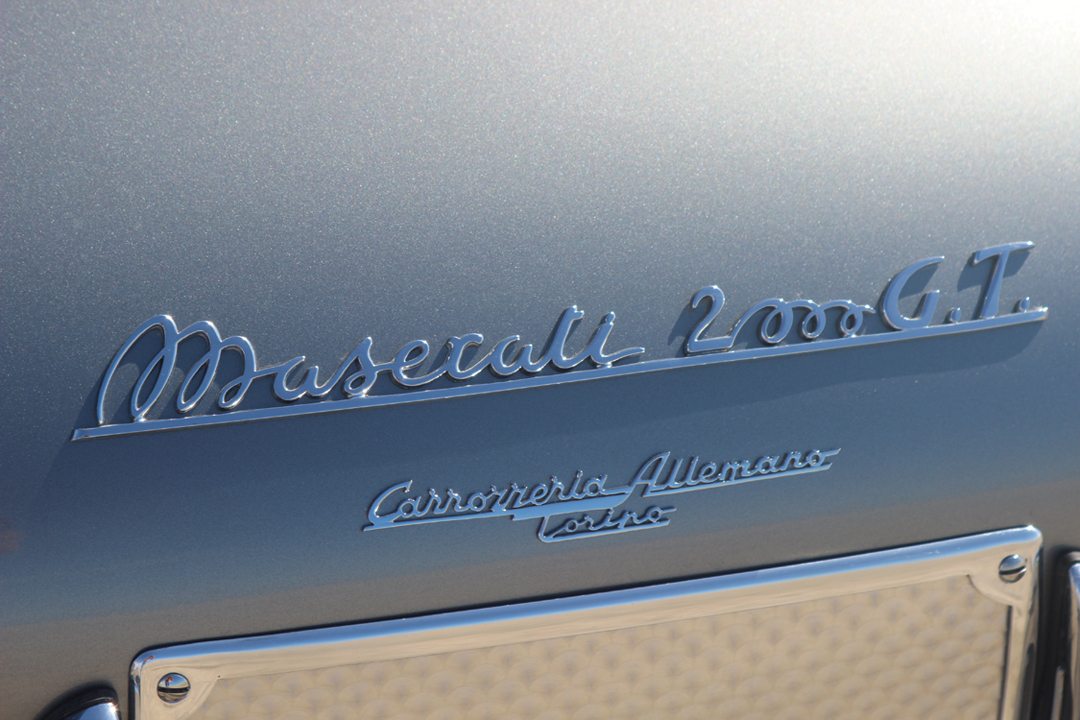
While the A6-1500 looked the part, its single carburetor engine was only able to put out a mere 65 hp, so by the 1950 Turin Auto Show, a new 2000-cc, SOHC version was released (A6G-2000). While Maserati was committed to building a road-going sports car, ostensibly a GT for affluent clients, it wanted to do it with the least amount of dedicated infrastructure and cost as possible. To this end, Maserati had an existing drivetrain, derived from its racing cars, so there was no need for much in the way of new or dedicated tooling there. Rather than creating infrastructure for the manufacture of the roadcar frames, Maserati outsourced that task to Gilco, an Italian specialty manufacturer of steel tubing for bicycles, that had also become a constructor of tubular frames for such names as Ferrari and Cisitalia. In the case of the A6G-2000, Gilco created a ladder-type frame using two, 3-inch diameter longitudinal tubes that swept up and over the rear axle, with external outriggers to hold up the bodywork. Like the frame, when it came to the bodywork, Maserati elected to have each A6G body outsourced in the coachbuilt tradition, thus offering a wider variety of body styles without the cost and tooling of in-house construction. In all, 16 examples of this new road-going sports car were produced in 1950 and 1951; nine with bodywork by Pininfarina, six bodied by Frua and one by Vignale.
Though the A6G-2000 was a marked improvement over the 1500, the car still lacked sufficient horsepower to put it in the same league as the cars crosstown rival Ferrari was producing. However, in December of 1952, Maserati revealed a new A6GCS racecar that featured a 1,988-cc, dual overhead cam A6 engine that looked like the foundation for a promising new power plant for the underpowered A6G-2000 GT roadcar.
A True GT
In 1954, at the Geneva Auto Show, Maserati debuted a revised A6G-2000 that would also come to be known as the A6G/54. While fundamentally the same Gilco-built, 100-inch wheelbase, tubeframe chassis, with independent suspension up front and leaf-sprung live axle in back, the A6G/54 now benefitted from a detuned version of the A6GCS, 2-liter engine. Specially tuned by Maserati engineers Vittorio Bellentani and recent Ferrari refugee Gioachino Colombo, the 1985-cc, DOHC engine breathed through triple Weber DCO3 carburetors, yielding a solid 160 hp that was capable of pushing the car to speeds in excess of 130 mph.
Befitting its intended GT clientele, the new A6G/54 was a bespoke roadcar that could be clothed in a number of coachbuilt variations. Design options included either a coupé or convertible body built by Frua of Turin, a lightweight and sexy coupé racing body by Zagato or a more-stately coupé body built by Allemano in Turin. Between 1954 and 1957, a total of 60 examples of the A6G/54 (nee A6G-2000 GT) would be built, with 20 cars fitted with Zagato bodies, 19 carrying bodies from Frua and 21 by Allemano. Production of the A6G ceased in 1957, when Maserati began work on its eventual replacement, the 3500 GT.
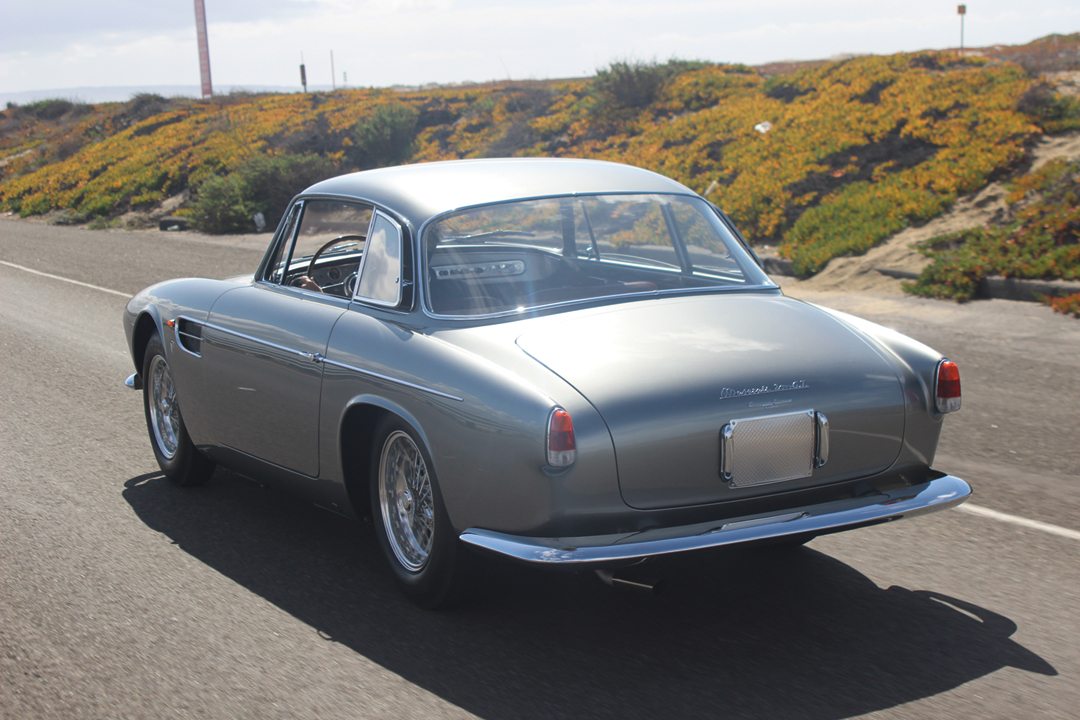
The Allemano Coupés
Serafino Allemano opened his own body repair shop in Turin, in 1928. While repairs paid the bills, Allemano’s aspirations were more in line with the design and construction of coachbuilt bodies. By 1935, Allemano was able to abandon doing repair work, as the vast majority of his business was now devoted to constructing bodies for Fiat and Lancia. After the war, Serafino returned to new car construction, joined by his nephew Mario, which saw the duo creating custom coachwork for a variety of small car chassis including the Fiat 1100, Renault 4CV and the Dyna-Panhard. However, in 1948 Allemano was commissioned to create a body for the Ferrari 166 S, which was soon followed in 1950 by the creation of a body for the Alfa Romeo 2500 and in 1952 one for the Lancia Aurelia. Allemano’s reputation was steadily growing.
By 1955, Allemano’s work had caught the eye of Maserati, as well. At the time, Maserati was offering its A6G sports car with a variety of bodywork from such carrozzeria as Frua, Vignale and Zagato. However, several of these carrozzeria were taking too long to produce their coachwork, so Allemano was invited to offer a coupé body, starting in 1955.
The original styling exercise for the Allemano coupés appears to have come from a sketch penned by Giovanni Michelotti, on July 11, 1955. Later that year, the first Allemano coupé made its debut at the Paris Motor Show, featuring a fastback design with large “greenhouse,” grilled fender vents and a chrome trim strip running the length of the beltline. Over the ensuing two years and 20 examples, slight changes would be introduced, resulting in four subtle “evolutions” of the Michelotti design.
The A6G/54 Allemano that you see on these pages is a remarkably well-documented example that appears to be part of the final Allemano design evolution. Its chassis was built by Gilco on December 21, 1955, and shipped to Allemano in Turin. Allemano created its eighth A6G/54 body for it, designated a “Berlinetta 2-4 posti,” and subsequently shipped the car back to Maserati in Modena in April of 1956 for final assembly and finishing. Maserati’s April 15th build sheet indicates that the car, finished in silver “Grigio Azzurro Cangiante” paint with red interior, received its engine (#2125 with triple Weber 36 DO4 carburetors), 4-speed gearbox, Borrani wire wheels, Abarth exhaust, Jaeger gauges and Cibié headlights. Based on a number of factors (timing of the build, colors, etc.) it is believed that Chassis 2125 was put on the Maserati stand at the 1956 Turin Motor Show, held that year from April 25-May 2.
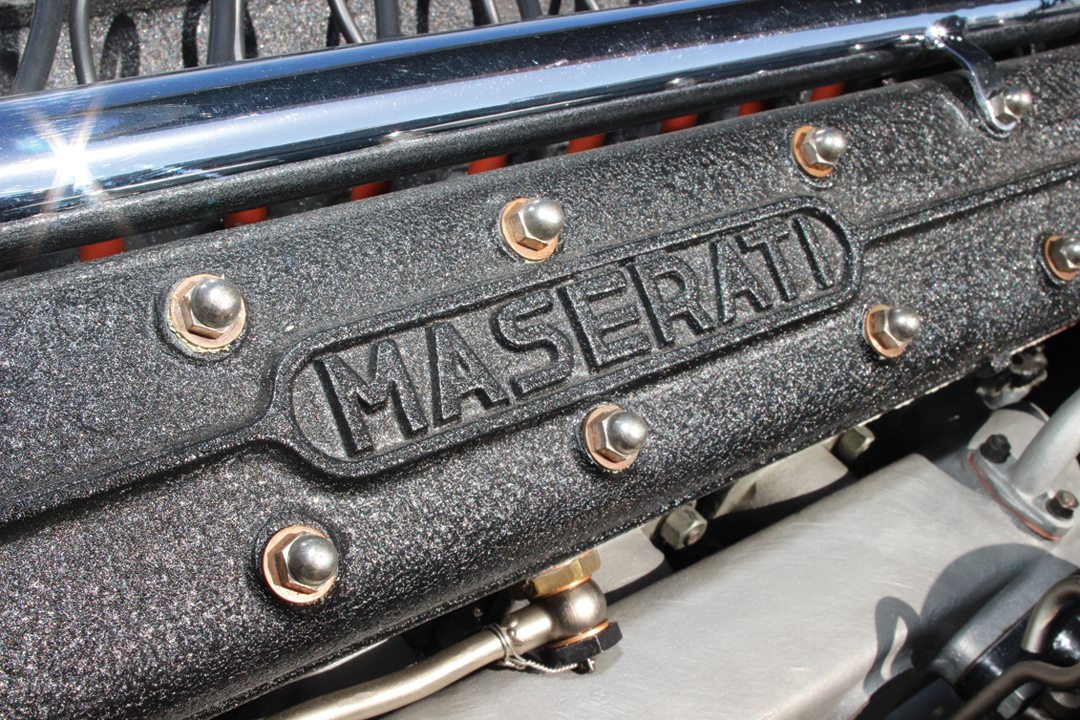
On July 2, 1956, Chassis 2125 was sold for 4 million Lire to its first owner, Gino Tanzi, a wealthy businessman in the food industry, who split his time between Parma and Piacenza. By 1958, Tanzi left Italy for Venezuela and so the Allemano was left with a dealer in Parma to be sold. On June 11, 1958, it was purchased by Guglielmo Saviola for 800,000 Lire. Saviola drove the car until the winter of 1959, when he crashed it and badly damaged the front end. The car was subsequently sold to Guerrino Lelli, a driving school instructor, on October 7, 1960 for a mere 100,000 Lire, suggesting that the car was sold in still-damaged condition. By September 21, 1961, Lelli sold the Allemano to Giampiero Corti for 500,000 Lire. At some point in time, prior to 1993, Corti sold the car to Maurizio Forleo, who in turn sold the car on May 8, 1993, to the restoration shop of Giovanni Giordanengo & Sons for €28,405. On May 10, 1996 Giordanengo sold the car to Precar di Maganza C. & C. for €34,602. Not long thereafter, on June 5, 1997, the Allemano moved on to Giuseppe Prevosti for €64,101, who a decade later consigned the Allemano to RM Auctions’ 2007 Battersea Park sale, where it was purchased by the current owner, Jonathan Segal of San Diego, California.
When Segal bought the Allemano it was painted light metallic green, with a beige interior, but according to his son Matthew, was in dreadful mechanical shape and needed a full ground-up restoration. Overseeing much of the work themselves, the Segals returned Chassis 2125 back to the color combination and finish in which it was shown at the 1956 Turin Motor Show. The car was finished just in time for the 2011 Pebble Beach Concours d’Elegance where it garnered a well-deserved first in class—the first Allemano-bodied car to win that honor at Pebble.
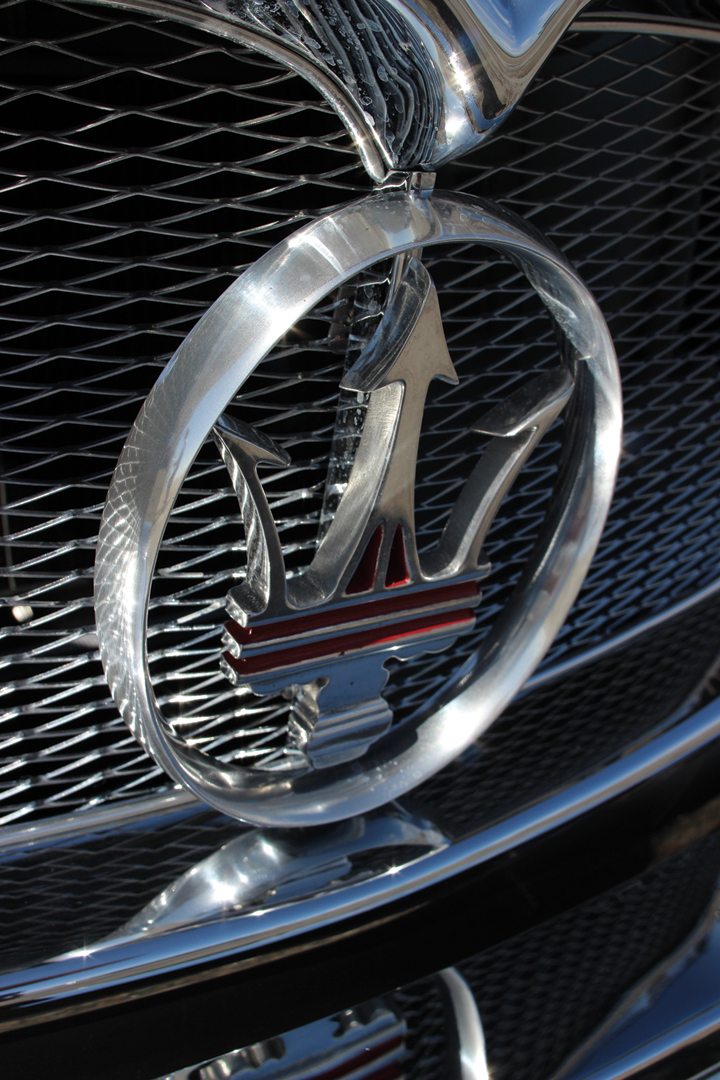
On the Road
Segal’s Allemano is parked in front of the main entrance to San Diego’s Hotel Del Coronado, when we arrive—and looks right at home. Sparkling in the spring sunshine, the Allemano looks positively regal as it rests in front of one of California’s most grand and stately hotels.
In its day, the Allemano’s styling came in for criticism in certain circles, with some labeling it “pedestrian” or “staid” compared to its more sexy Zagato sibling. Perhaps a certain sense of perspective was lost here, something akin to calling Raquel Welch a hag, because she is standing next to Brigitte Bardot! After all, the Allemano was styled for a very different client than the Zagato. Playboys and aspiring racers drove the Zagato, captains of industry drove the Allemano.
Opening the push-button door and sliding into the driver’s seat, only heightens the sense of refinement and sophistication. Trimmed in red leather and chrome, the interior is both luxurious and stylish, with just a hint of minimalist thrown in for good measure. The body color painted dashboard is beautifully streamlined and simple, with two large Jaeger, black-faced gauges behind the wheel, and three ancillary gauges nested in the center. Off to the right, a central strip running across the dash finds all the switchgear neatly lined up in a single-file row, with a chrome “Maserati 2000 GT” script completing the package at the far end.
The large individual front seats are shaped much like a ’50s bench seat, with relatively flat bolsters and no lateral support. Relative to the dashboard and front window the seats are quite low, which means for shorter drivers your sightline will be through the large wood-rimmed Nardi steering wheel and not over it. The good news is that this is one of the rare ’50s Italian coupés that will easily accommodate a driver in excess of six feet.
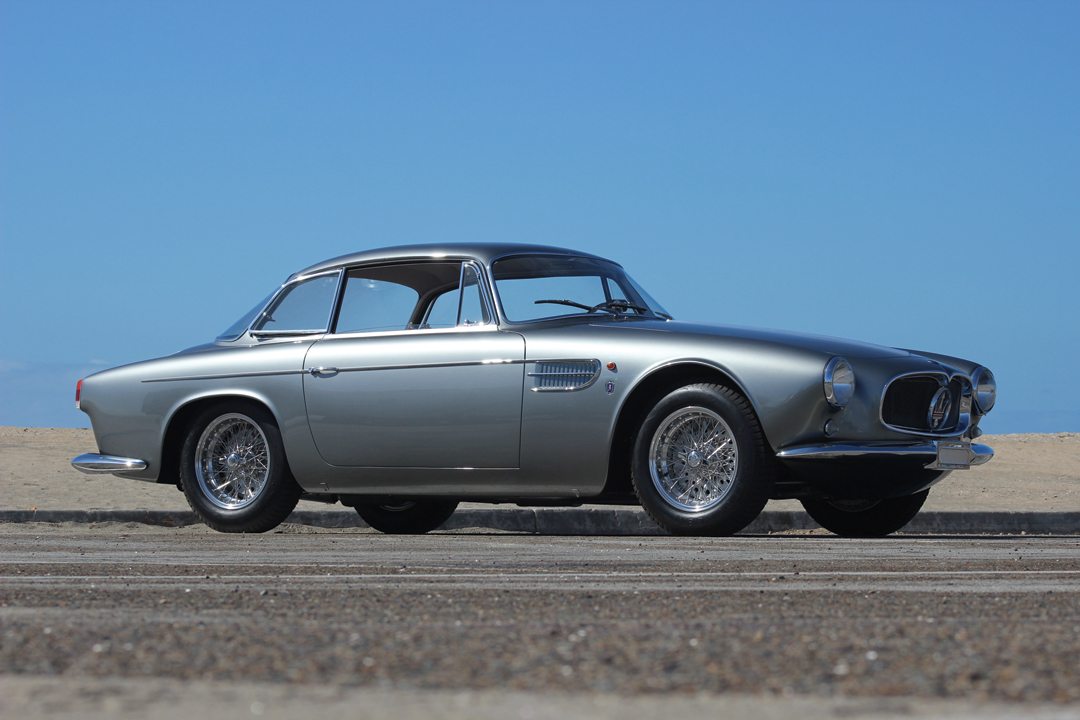
Reaching over to the center of the dashboard the first of the unlabeled switchgear, nearest the driver, is the ignition key. Giving it a turn to the right and then pushing it in engages the starter and brings the 2-liter 6-cylinder to life. While the car’s visuals exude quiet sophistication, its exhaust note betrays its racing heritage. With a raspy engine note dominated by the mechanical whirring of the twin, chain-driven camshafts, the interior is surprisingly filled with the sound of the engine at idle—though this is not necessarily a bad thing! Part of this mechanical serenade in the cockpit can be attributed to the neatly leather-clad cube projecting out from under the dashboard. In a detail seemingly unique to the Maserati A6G, this box is actually a cover for the distributor, which protrudes off the back of the engine and right through the firewall into the cockpit. Not many cars allow the driver to be able to check the dwell and gap from the comfort of their seat!
With floor-mounted circular pedals also erupting from the bottom of the firewall, one dips the lightly sprung clutch and then slides the gearshift lever forward and to the left for first gear. This movement is met with an audible graunch as the straight-cut, non-sychromesh cogs, for first gear in the 4-speed gearbox, reluctantly try to organize themselves. After raising the noise level a little higher in the cockpit with the accelerator pedal and gently letting the clutch out, the Allemano pulls away from the Del Coronado with the sweet sound of that racebred power plant humming away under the hood.
Accelerating down the road, the A6G doesn’t feel particularly powerful at anything below 3000 rpm. It has to be kept in mind that this is an over-square, short stroke (72-mm) 2-liter engine and so is not going to make bags of torque at low end. But begin to wind the Allemano up over 3000 rpm and the power starts to flow as the engine wails closer to its 7,000 rpm redline. Snatching second gear proves problematic, as the non-synchromesh lower gears need to be double-clutched to make the first-second shift. In fact, one of the car’s foibles is the gearbox. Strangely, the A6G came with a 4-speed gearbox that only had synchromesh on third and fourth gears and this, combined with the shifter’s long, somewhat vague throws, makes the gearbox something that has to be gotten used to.
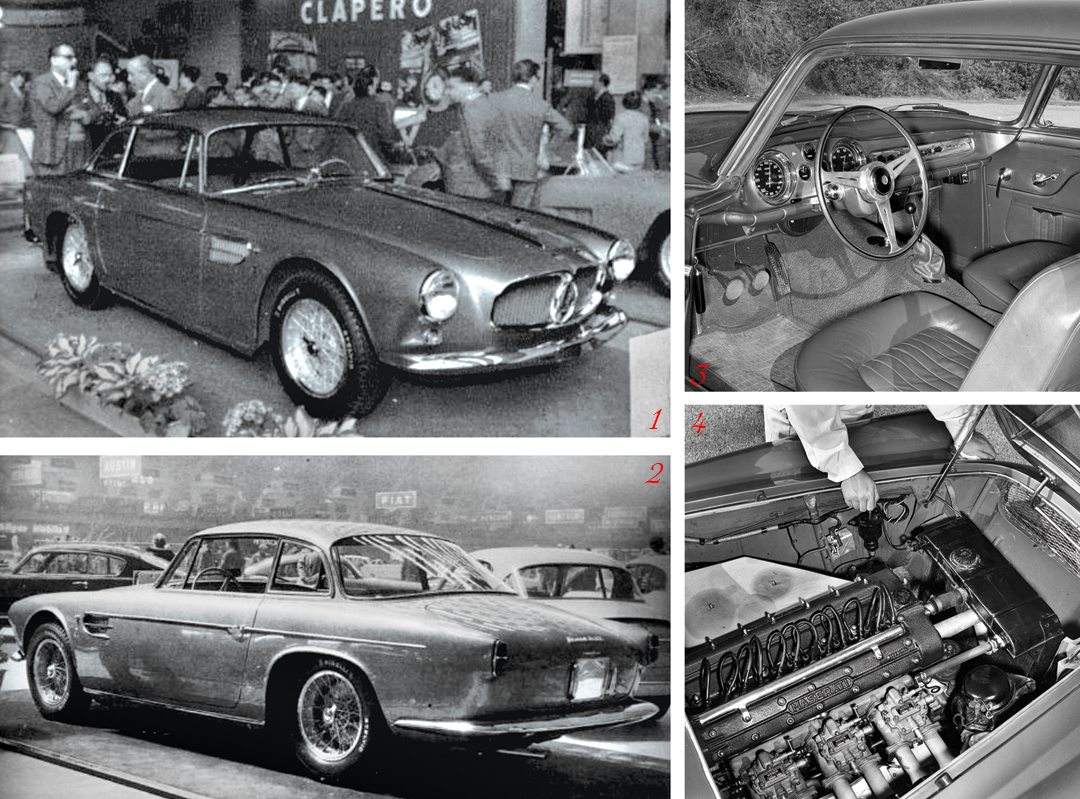
With increased speed, the third- and fourth-gear shifts are easier, and soon get the Allemano cruising along at 70-80 mph. It is at this speed and above where the Allemano is truly at home. At nearly 500-700 pounds heavier than the Zagato variation, the Allemano feels like a substantial car. With stiff springs and fairly hard Blockley vintage tires, this example tends to feel a little bouncy and harsh, especially at lower speeds. Handling is good, but again the increased weight and relatively low torque make this much more of a tourer than a racecar—and quite frankly that is what it is. The Allemano was designed to be a true Grand Tourer, with the emphasis on “Grand.” For the wealthy businessman in 1956, this was a comfortable car, with panache and a racy engine that was most at home high-speed cruising along the Autobahn, not lowering lap times at the Nürburgring.
While the Allemano-bodied A6G has always taken a back seat to its more lithe sibling the Zagato, this comparison does not do justice to a car that, from the outset, was intended for a very different type of clientele. Removed from the racing inspired tarmac, where all of its Maserati contemporaries tread, the Allemano stands as a true luxury GT car—a car ideally suited for a captain of industry.
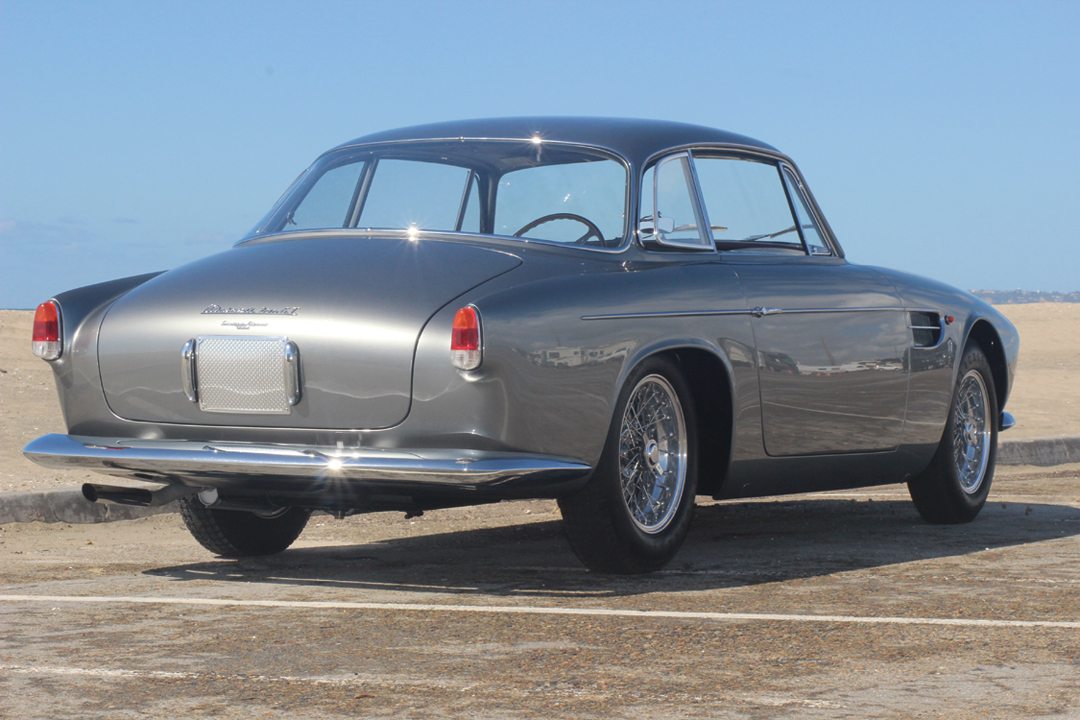
SPECIFICATIONS
Chassis: Steel, Gilco-built, tubular ladder frame
Body: Steel by Allemano
Wheelbase: 100.4 inches
Weight: 2,800 pounds
Track: Front 53.5 inches, Rear 48 iches
Front Suspension: Independent with double wishbones, coil springs, Houdaille dampers and anti-roll bar
Rear Suspension: Live axle with quarter-elliptic springs, radius rods, Houdaille dampers and anti-roll bar.
Steering: Worm and sector
Engine: Twin-plug, DOHC, inline-6, 2 valves/cylinder
Displacement: 1985-cc
Bore/Stroke: 76.5-mm x 72-mm
Compression: 8.1:1
Induction: Triple Weber 40 DCO3 carburetors
Power: 160-hp @ 6,000 rpm
Transmission: 4-speed, with synchromesh on third & fourth gear
Brakes: Drums (front & rear)
Wheels: 16.0 x 4.5 inches
Price when new: $9,500


